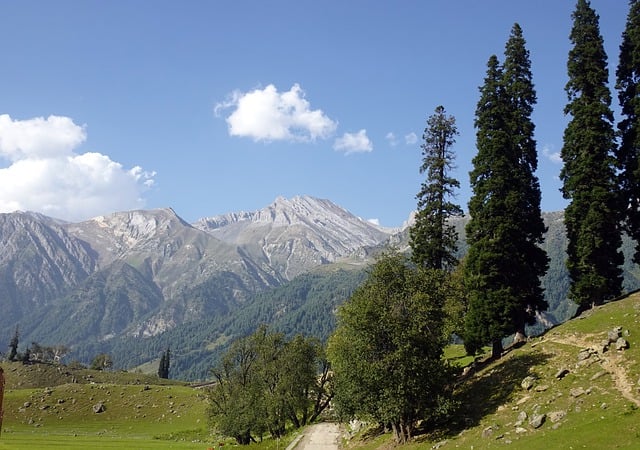Introduction
Renewable energy sources are the one that can be renewed or replenished quickly. They do not risk running out because the source is constantly available on our earth, for example light from the sun or movement of winds or water etc.
Green energy is any type of energy that can be produced from natural resources like the wind, sunlight and water. It mostly comes from renewable energy sources while there are some slight differences between green and renewable energy. Green energy is mainly taken from renewable energy technologies for instance wind power, solar energy, geothermal energy, biomass and hydroelectric power. All of these work in different manner. Such as the solar energy uses solar panels, hydropower energy is produced by flow of water and wind energy through wind. In order to be characterized as green energy, the energy source cannot be causing pollution. For instance, energy produced from burning organic matter from sustainable forests they release carbon dioxide so they cannot be deemed as green energy source as they cause pollution. Green energy sources also don’t use drilling processes that damage the habitat and the biodiversity.
Similar is the case with clean energy sources, which are renewable energy sources that do not cause pollution. Read: Is Transition To Clean Energy Crucial For Our Survival?
Commonly, Renewable Energy Resources, Green Energy or Clean Energy Sources are usually used interchangeably used to describe the same thing.
Also check out: Renewable Alternative Energy Resources – Advantages and Disadvantages
Types Of Renewable Energy Resources
The main source of energy is wind power, solar power and hydroelectric power, as these are produced both at a very small scale and a large scale as well. Most of the common types are described in detail below:
-
Wind Power
It produces energy by utilizing the flow of energy that moves the turbine and in turn it produces energy. Most of the turbines are locate at high altitude and off shores. When a lot of wind turbines are set up in a place, it is then known as a wind farm. For more detailed info: What is Wind Energy? – Uses, Advantages, Disadvantages.
-
Solar Energy
Solar comes directly from the sun as it is a clean source of energy. The stars such as the sun and moon produce immense amount of energy through nuclear fusion. Nuclear fusion is a process in which smaller amounts combine to form more energetic and powerful larger atoms while releasing a lot of energy during this process. This energy then reaches to the earth in the form of solar radiation. The solar panels are made up of photovoltaic cells. When the solar radiations hit these photovoltaic cells, electric current is produced through photovoltaic effect. It is passed through an inverter which produces alternating current and it can used for the small-scale or large-scale purpose. Solar energy is used for heating buildings, heating water and cooking food. It has become quite affordable more than before therefore it is being used for domestic purposes. It can also be used at a larger scale for an entire neighborhood or at industrial level. For more info: What is Solar Energy? – Uses, Advantages, Disadvantages.
-
Geothermal Energy
The thermal energy that has been stored beneath the earths crust is called geothermal energy. It can be used to power the turbines to produce electricity as well as to take a bath in the hot springs for thousands of years. It requires drilling process which causes environmental damages. The geothermal energy in the USA alone is enough to produce 10 time more energy than coal. Some countries like Iceland have easy access to location while some have difficulty in drilling procedures.
Also check out: Why We All Should Move to Clean Renewable Energy
-
Hydropower
This energy requires the flow of water in streams, dams, rivers and oceans to produce energy. It can be produced on a small scale as well as on a large scale. Energy is produced by forcing water through a very narrow path. It increases the energy per square meter of water. The gravitational energy produced by the water when it stored in a high-end place when released flows at a very rapid speed. This in turn spins the turbine which produces electricity. 4 billion tonnes of carbon dioxide were prevented by using the hydrothermal energy alone in 2017 in USA.
You might also like: 10 Latest Innovative Environmental Friendly Technologies
-
Biomass
Wood waste, garden clippings, saw dust and combustible organic matter from the garden, farms and agricultural fields produce biomass that can be burned to produce energy. It releases greenhouse gases but at a much lower rate than the uncontrolled fossil fuel burning. Also check out: What Are Alternative Fuels? Types, Benefits, and Importance
Conclusion
Green energy is said to be a part of the future of the world. It offers a cleaner alternative as compared to many of energy sources being used today. Readily replenished, these energy sources are not just good for the environment, but are also leading to job opportunities and look set to become economically efficient as research and developments proceed.
You might also like: What is Nuclear Energy? – Uses, Advantages, Disadvantages
We hope you liked this post! Please comment below if you have any suggestions, comments or feedbacks! We at #envpk love hearing from readers! Thanks!




